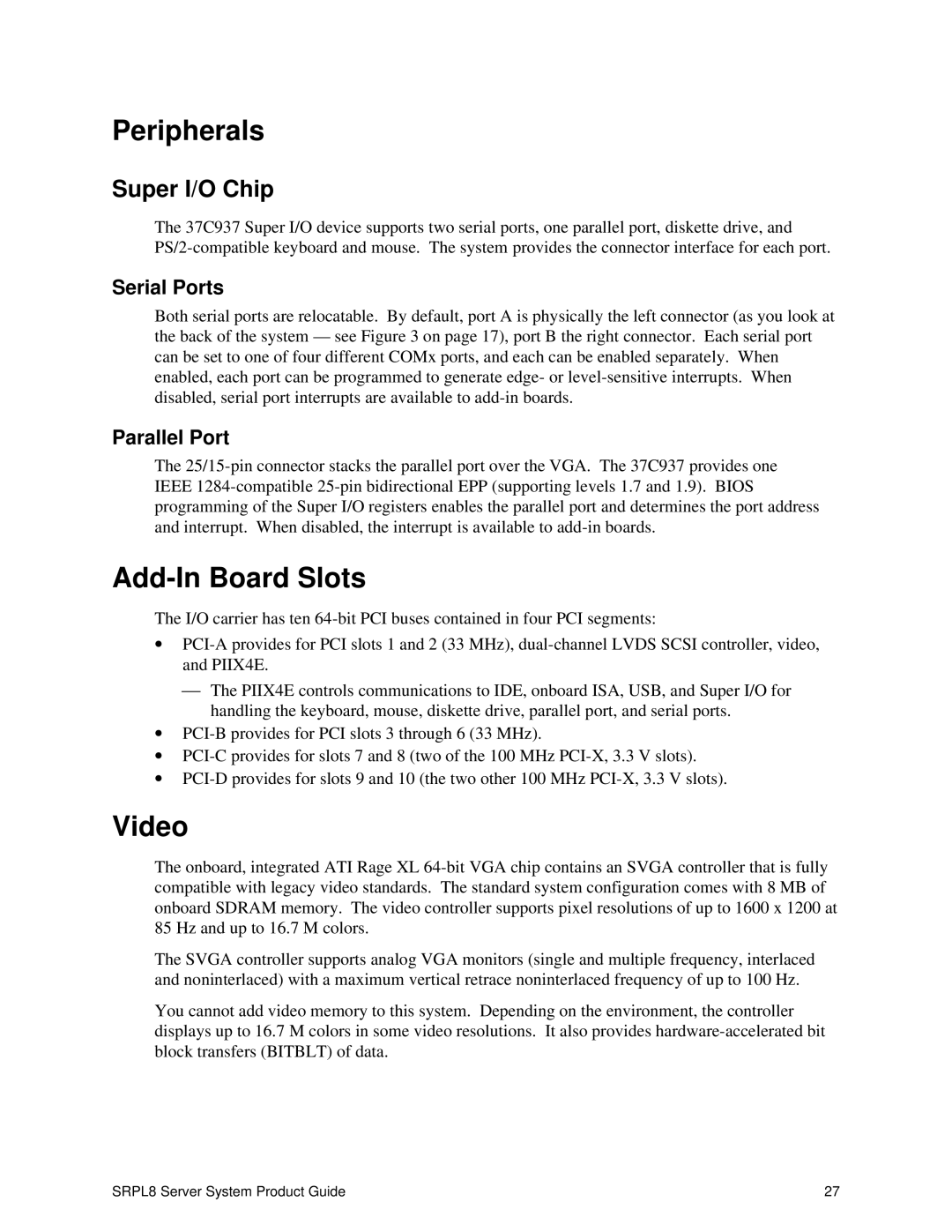Peripherals
Super I/O Chip
The 37C937 Super I/O device supports two serial ports, one parallel port, diskette drive, and
Serial Ports
Both serial ports are relocatable. By default, port A is physically the left connector (as you look at the back of the system — see Figure 3 on page 17), port B the right connector. Each serial port can be set to one of four different COMx ports, and each can be enabled separately. When enabled, each port can be programmed to generate edge- or
Parallel Port
The
Add-In Board Slots
The I/O carrier has ten
∙
⎯The PIIX4E controls communications to IDE, onboard ISA, USB, and Super I/O for handling the keyboard, mouse, diskette drive, parallel port, and serial ports.
∙
∙
∙
Video
The onboard, integrated ATI Rage XL
The SVGA controller supports analog VGA monitors (single and multiple frequency, interlaced and noninterlaced) with a maximum vertical retrace noninterlaced frequency of up to 100 Hz.
You cannot add video memory to this system. Depending on the environment, the controller displays up to 16.7 M colors in some video resolutions. It also provides
SRPL8 Server System Product Guide | 27 |
